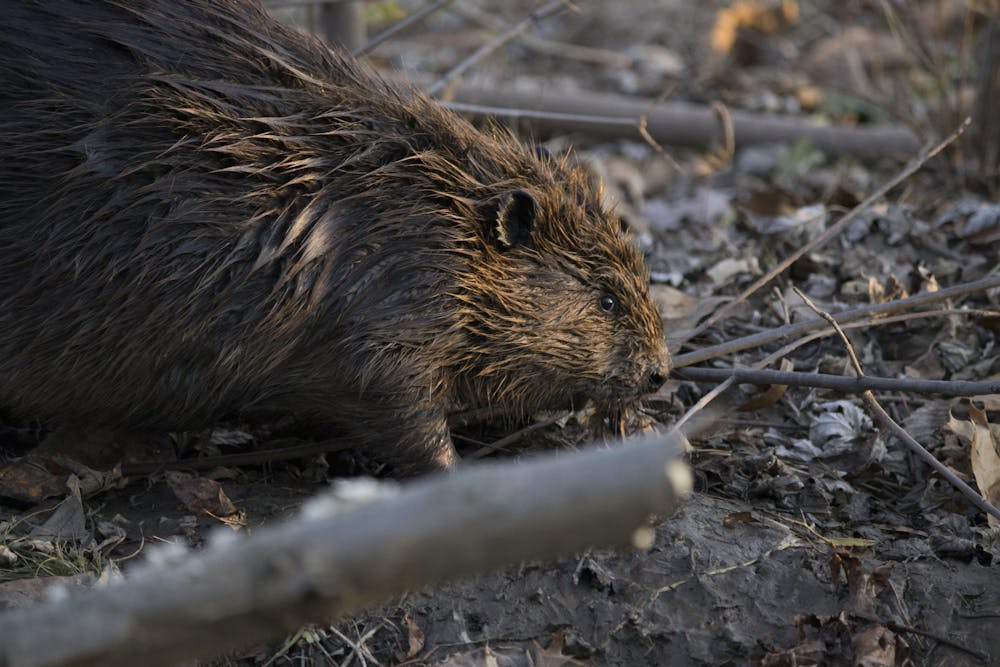A beaver has made itself a home on IU’s Campus River.
The beaver’s dam is in a lightly wooded area far enough away from footpaths that students should not typically encounter the animal. The beaver presents no risk to students, IU paleontologist P. David Polly said.
“The main conceivable risk is that one could fell a tree,” Polly said, “The chances of one hitting a student are almost zero.”
Beaver dams on the Campus River could reduce the risk of flooding. The Campus River flows into a culvert on Indiana Avenue near Franklin Hall. It was this culvert that overflowed during a thunderstorm in June 2021, causing one death and property damage on Kirkwood Avenue.
“Allegedly, the sound of running water annoys them, so they build dams to make pools,” Polly said. “This slows down the water flow,”
The beaver is not a risk to IU property, unless the pool created by the dam becomes so large that it could put nearby areas or buildings at risk of flooding or if the beaver cuts down too many trees, Polly said.
According to Purdue’s guide to common Indiana mammals, American beavers weigh between 28 and 70 pounds and can live up to 20 years old in the wild. They eat plants, twigs and tree bark. Beavers create dams by cutting down trees with their teeth and packing them with mud. The dam creates a pool that promotes the growth of plants that the beaver eats, according to the guide.
In the Midwest, beavers were nearly hunted to extinction due to the North American Fur Trade that began in the 1600s. They were easily hunted since they live around rivers and streams. According to the Bonner County Historical Society in Idaho, beaver pelts were in high demand from the 1600s to the mid-1800s due to the popularity of beaver top hats across Europe.
Beavers were reintroduced in 1935 at the Jasper-Pulaski Fish and Wildlife Area, according to the Indiana Department of Natural Resources. Beavers have made such a comeback in Indiana that around 3,000 of them are trapped by licensed trappers each year to keep populations healthy.
During the last ice age, Indiana was home to a species known as the Giant Beaver. At 6 to 7 feet in length and up to 275 pounds, the species roamed North America up until about 10,000 years ago.






